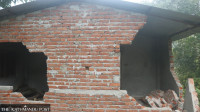National
Public school students faring poorly compared to private schoolgoers
Students from Province 1 and Bagmati, Gandaki and Lumbini have fared better in four main subjects.
Binod Ghimire
The performance of students from public schools is below the average learning achievement prescribed by the curriculum.
A report by the Education Review Office under the Ministry of Education made public on Friday shows a disparity in the learning achievement between the public and private schools. The review office had carried out a study among 42,000 grade 10 students of the 2019 batch from 1,800 public and private schools across the country.
The average performance of the community school students in mathematics stood at 491 against 542 of the private school students. Likewise, the average learning achievement in Science of the community school students is 491 against 540 of the private school students. In Nepali the performance of public school students is 496 against 512 of those from private schools, and in English it is 488 for public school students against 556 for private school students.
The study was done using a multi-stage sampling technique and Item Response Theory where 500 has been taken as the mean value of performance. The 500 reflects the average performance on a scale that ranges from 0 to 1,000. However, the range of the score students achieved largely runs between 400 and 600, according to the review office.
“The study shows the learning achievement is higher where the investment is higher. It applies to both private and public schools,” said Shiva Kumar Sapkota, director general of the review office. “The study tests not just the learning achievement of the students but also the efficiency of the education system.”
Along with the funding in schools, there are several other factors that affect the learning achievement.
Except in Nepali, girl students fare poorer in mathematics, Science and English in comparison to their male counterparts. The performance of the students from urban areas is better than those from rural areas while the performance of students from the schools where they have cordial relationships with teachers is better.
According to the study, the mother’s education has a huge role in increasing the learning achievements of the children. The children of a mother who holds a master's degree have an average learning achievement of 558 in mathematics, 561 in Science, 520 in Nepali and 567 in English. However, for the children of illiterate mothers, the average learning achievement is 490 in mathematics, 488 in Science, 487 in Nepali and 482 in English.
“The average performance of the students in both the private and public schools stands at around 500 in all four subjects which means students have only grasped around half the content prescribed in their courses,” said Shyam Acharya, an officer at the review office who was involved in the study. “This is definitely not a satisfactory result.”
Mother tongue and the development status of a particular area too has a direct impact on the learning achievement, as per the report. The students who speak Nepali as their mother tongue fare better than those who speak other languages. The average learning achievement for the students speaking Nepali is 504 in mathematics, 506 in Science, 505 in Nepali and 500 in science while they are 493, 489, 488 and 486 respectively for the students from the families which don’t have Nepali as their mother tongue.
While the students from Bagmati Province, Gandaki Province, Lumbini and Province 1 have better performance in all four subjects, those from Karnali Province have the poorest outcome followed by Sudurpaschim Province and Province 2.
The findings of the review office for grade 8 in 2019 also painted a similar bleak picture. It has been assessing the performance of the students of grades 3, 5 and 8 since 2011.




 18.12°C Kathmandu
18.12°C Kathmandu















